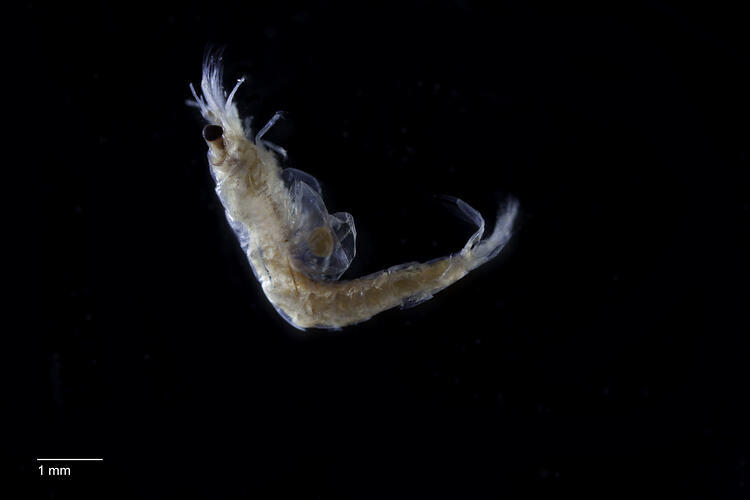General Description
Stalked eyes, carapace covering the head and most of the thorax. Spine at anterodistal corner of eye stalk absent. Rostrum triangular, acute. Antenna 2 scale shorter than antenna 1 peduncle. Uropod exopod much longer than endopod. Abdomen long, ending in a tail fan bearing pair of statocysts. Telson cleft or notched with robust setae present along distal half to two thirds of outer margins. Up to 1.5 cm long.
Biology
Opossum shrimps are so-called because they carry their eggs and young in a marsupium-like pouch. Mysids can form large shoals in shallow waters, thus are an abundant food source for both adult and juvenile coastal fish.
Distribution
Southern temperate oceans, including south-eastern Australia.
Habitat
Shallow water and seagrass beds, to depths of 100 m.
More Information
-
Animal Type
-
Animal SubType
-
Brief Id
Stalked eyes, carapace covering the head and most of the thorax. Abdomen long, ending in a tail fan bearing pair of statocysts. Lateral edge of telson armed with spines.
-
Maximum Size
15 mm
-
Habitats
-
Diet
Plankton or Particles
-
Endemicity
-
Commercial
No
-
Conservation Statuses
DSE Advisory List: Not listed, EPBC Act 1999: Not listed, IUCN Red List: Not listed
-
Depths
Shore (0-1 m), Shallow (1-30 m), Deep ( > 30 m)
-
Water Column Locations
On or near seafloor, Midwater
-
Taxon Name
-
Scientific Author
(Sars, 1883)
-
Common Name
Opossum Shrimp
-
Phylum
-
Subphylum
-
Superclass
-
Class
-
Subclass
-
Superorder
-
Order
-
Family
-
Subfamily
-
Genus
-
Species Name
angusta

